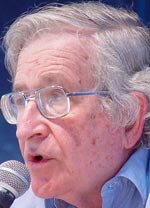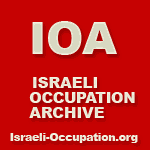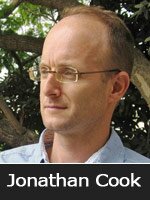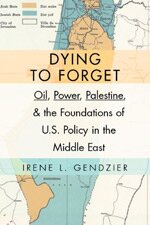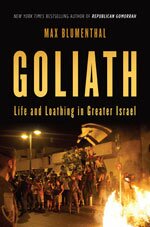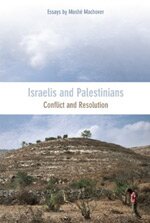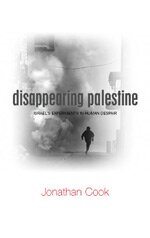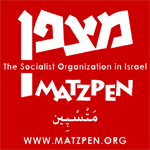[I]t is not certain UNRWA will manage to overcome Hamas’ objection to instituting Holocaust studies in Gaza… but the attempt should be encouraged, because it is impossible to understand Israel without understanding the place of the Holocaust in the Israelis’ universe, and one who does not understand his enemy will not be able to make peace with him either.
History
Abe Hayeem, an architect and founding member of Architects & Planners for Justice in Palestine writes about Tel Aviv and its deeply-rooted colonial history.
[The military researcher] also warned of the possibility that in a future conflict, the United States might not help Israel as it had in the past… Sandman recommended that the IDF ask the US to establish additional warehouses with emergency stockpiles of weaponry in Israel, even “if Israel has to pay for their maintenance.” The US already has several warehouses with weaponry in Israel.
The Education Ministry will be reexamining a new Hebrew-language history textbook… [that] gives expression to the Palestinian perspective on the Nakba (“catastrophe” in Arabic), which is the Palestinians’ term for what happened to them in the War of Independence.
On the morrow of the Six-day War, Amos Kenan came to my editorial office. He was in a state of shock. As a reserve soldier, he had just witnessed the emptying of three villages in the Latrun area. Men and women, old people and children, had been driven out in the burning June sun on a foot march in the direction of Ramallah, dozens of kilometers away. It reminded him of sights from the Holocaust.
IOA Editor: Kenan’s checkered past should be obvious to any reader of these pages (and Avnery’s account of history often leaves one wondering). This piece is included here because of Kenan’s role in revealing Israel’s conduct in 1967, specifically, the war crimes and ethnic cleansing that took place in the Latroun area. On this, see Imwas: occupied and destroyed by Israel in 1967, elsewhere on the IOA website.
“Israel must understand that to achieve quiet and security, real peace is needed. It’s true, the armed struggle isn’t the only solution, but if there’s no other solution, what choice do we have? What do you want, to build more and more settlements and for me to kiss your hand? If there is a diplomatic solution, there will be no need for violence.”
“Therefore I, a 95 year old Sabra (native born Israeli Jew), who has plowed its fields, planted trees, built a house and fathered sons… and also shed his blood in the battle for the founding of the State of Israel, [d]eclare herewith that I renounce my belief in the Zionism which has failed, that I shall not be loyal to the Jewish fascist state and its mad visions…”
IOA Editor: Avnery’s view of history is founded largely on his own imagination: Post-1948 Israel was a natural outcome of pre-statehood, and post-1967 Israel was a continuation of earlier years. But it fits with Avnery’s retrospective view of his life in Palestine/Israel. The key question conveniently left out by Avnery, and by the Dalia youth of 1947, was “what was to become of the Palestinian natives,” once the dancing stops and the fighting begins. However, the article reflects the internal tension in certain segments of Zionism, and this is why it is of interest.
The village of Imwas (عِمواس) was one of three villages in the Latroun area (Palestine’s District of al-Ramla) that were occupied by the IDF in June 1967, during Israel’s military conquest of the West Bank in the 6-Day War. Subsequently, the inhabitants of the villages were expelled, and their homes leveled to the ground. Where Imwas stood until 1967, Israel (via the Jewish National Fund) planted the Valley of Springs in Canada Park, a recreation forest which serves the purpose of re-writing the history of Palestine by eradicating its Palestinian past. The two other villages were Bayt Nuba (بيت نوبا) and Yalu (الو). Not one of the several thousands of people who lived there until 1967, and very few traces of their physical presence, remain today.
Information on these three Palestinian villages, and on hundreds of others destroyed by Israel since 1948, can be found at www.PalestineRemembered.com.
[T]orture has been routine practice from the early days of the conquest of the national territory, and then beyond… Small wonder that the President advises us to look forward, not backward – a convenient doctrine for those who hold the clubs. Those who are beaten by them tend to see the world differently, much to our annoyance.
Professor Shlomo Sand, the Tel Aviv University history professor and author of a controversial book on the genetic origins of the Jews, this week received a top critics prize from French journalists.
On the evening of October 29, 1956, Israel, allied with France and Great Britain, attacked Egypt, and the Sinai Campaign began. The operation lasted for about 100 hours and cost the lives of over 170 Israeli soldiers. Over the years, the widespread perception has been that Israel wanted this war, but to this day there is no consensus among scholars about the reasons why.
The PR war being waged by Israel over coverage of its invasion of Gaza is a critical part of maintaining the US public, if not the US government, in a state of maximal ignorance and above all, indifference, to the meaning of what is taking place in Gaza.
Israel’s goal has been a constant: Jewish sovereignty in Palestine. Israel has always sought to expropriate as much Palestinian land as possible and to rule over as few Palestinians as possible. This has been the single most important ideological and political principle informing the practices of the dominant strand of Zionism which founded the Jewish State in Palestine against the wishes of the Arab indigenous majority. 1948 epitomizes this principle: 78 percent of Palestine was forcibly conquered and 750,000-840,000 Palestinians were systematically expelled and prevented from returning to their cities and villages (hundreds of which were completely erased) in violation of international law and of UN General Assembly resolution 194 safeguarding refugees’ right of return.
TWO MYTHS have been with us for a while now… The first is that the way to get out of the Israeli-Palestinian imbroglio is by engaging in a “peace process,” and the second is that the result of that peace process is pretty much well-known.
What has U.S. support for Israel actually meant for the Israeli state? Which state capacities have been enhanced and which were curtailed as a result of this support (importantly, force or peace)? And what impact has this had on Israeli society and its economy at large? To answer such questions would involve specifying the nature of U.S. involvement in Israel-Palestine, spelling out the kinds of policies and objectives the U.S. state has allowed the Israeli state to pursue. It would, in fact, involve raising the specter of Israel as a colonial and occupying power, and this the various contributors to Israel Studies seem unwilling to do. Colonialism and occupation are far from mainstream concerns in the Israeli academy. This may sound strange since both practices have defined the history of Israel since 1967 if not before. Yet it is not so strange if one considers that in this respect the Israeli academy merely reflects the attitudes of wider Israeli society: academic evasion mirrors popular denial and indifference.
May 11, Sabra-Shatila camp
There is a plot of land of perhaps less than a half acre, surrounded by a wall with a large iron gate, where the victims of the 1982 massacre are buried. The land is mostly flat and covered by grass, with a few mounds here and there, the locations of mass graves which we can see through the gate’s vertical bars. On the outside wall there are large, slightly fading, poster photos of those found dead after the rampage of Phalangist militiamen that were sent in by the Israeli army that had surrounded the camp in 1982. The gate-keeper is an old Palestinian, with half of his teeth missing, sitting under the shade of the tree near the gate and selling flowers. We ask him to open the gate and let us enter the ground. The old man says that if the visitors are American he will not let them enter. “Yes, the visitors are American, but they are good Americans,” I explain. Then pointing to Noam a few steps away, I say that he, in particular, is the most indefatigable defender of Palestinian rights in America. The old man stares at me with a skeptical look for a few seconds, as if to gauge the truth of what I just said, then gets up and opens the gate.















